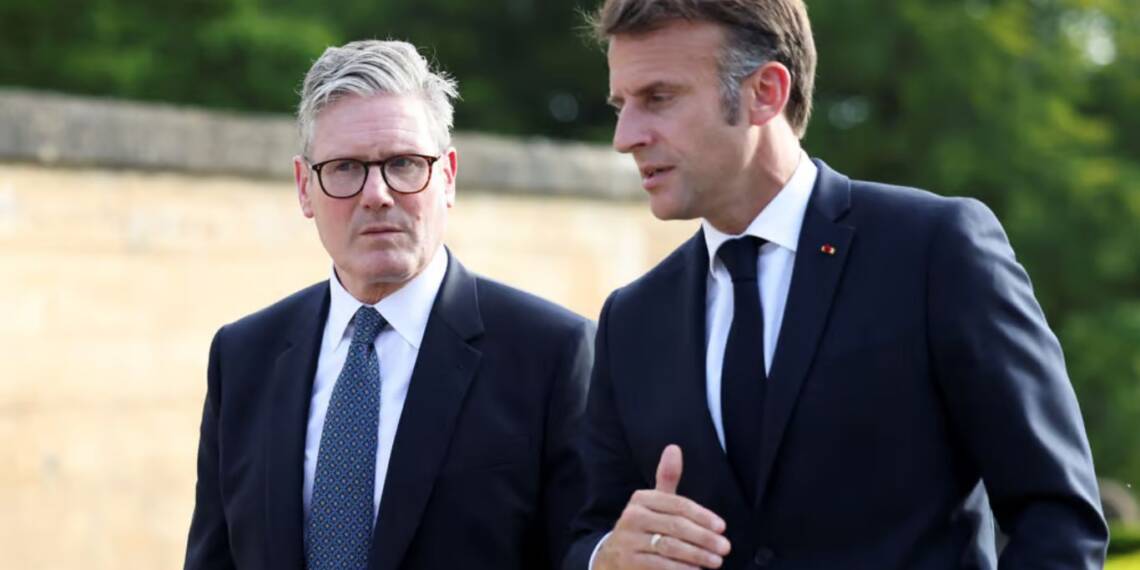Tensions between Europe and Russia are at an all-time high, with European leaders especially the UK and France scrambling to reinforce Ukraine’s defence amid growing uncertainty over support from the US under Donald Trump. The US president has made his stance clear—Washington will not be Europe’s safety net leaving EU nations in a precarious position.
While UK Prime Minister Keir Starmer has pledged full backing for Ukraine, aligning closely with Ukrainian President Volodymyr Zelensky. However, France President Emmanuel Macron remains cautious, because he knows a pandora box is waiting to be unleashed if it happens.
He has issued a warning, a grim one. That seizing frozen Russian assets could set a dangerous precedent—one that might destabilise global financial confidence. As Europe struggles to navigate this crisis, the divide between pragmatism and bold action threatens to deepen further.
$350 Bn in Line
Tensions between the UK and France have flared over whether $350 billion in frozen Russian assets should be seized and redirected toward purchasing American defence equipment—an effort to keep the US engaged in Europe’s security amid Trump’s wavering support for Ukraine.
The UK has long supported confiscating Russian state assets, a stance recently reinforced by UK Foreign Secretary David Lammy and Ukrainian President Volodymyr Zelenskyy. British officials argue that since these funds are already frozen and will not be returned to Russia unless it pays war reparations, using them for Ukraine’s defence is a logical next step.
However, France President Emmanuel Macron, along with Germany and the European Central Bank, opposes the plan. Macron has warned that seizing sovereign assets would set a dangerous precedent, deterring foreign investments in the eurozone from key players like China and Saudi Arabia. Speaking alongside Donald Trump last week, Macron bluntly stated:
“These assets do not belong to us; they are frozen. If, at the end of negotiations with Russia, they are given to us—super.” Macron has also been a vocal advocate for reducing Europe’s dependence on US weaponry. He believes using Russian funds to buy American arms would strengthen US defence firms at Europe’s expense, undermining long-term efforts to create an independent European defence industry.
This debate has intensified as Trump threatens to pull US support for Ukraine. Some European leaders see the Russian assets proposal as a way to keep Trump engaged—an incentive that could convince him not to abandon Ukraine entirely. The UK argues that the plan would bind the US closer to Europe’s defence, particularly if American arms manufacturers benefit directly.
Inside the EU, countries like Poland, Estonia, and the Czech Republic support full asset seizure, while others prefer using only the interest generated for military aid. Meanwhile, Macron remains focused on long-term European self-reliance, proposing a defence spending increase to 3.5% of GDP and exploring alternative funding sources, such as EU cohesion funds or a joint defence bond.
Macron and France know the outcome
To avoid deepening UK- France tensions, some experts, including former UK National Security Adviser Lord Ricketts, suggest a compromise: pooling frozen Russian assets into a €100 billion fund that Ukraine could use to buy both European and American weaponry—a move that would benefit both defence industries.
With Trump’s stance on Ukraine unpredictable and Europe scrambling to fill the gap, the fate of these Russian assets is likely to remain a major point of contention in the coming months.
As tensions rise, Macron fears Europe is inching closer to war, wary of reckless moves that could spiral out of control. Yet, Zelensky remains adamant, pushing for stronger action and demanding the seizure of Russian assets to sustain Ukraine’s fight. Meanwhile, Keir Starmer is adding fuel to the fire, firmly backing Kyiv despite the risks. At the same time, Trump’s unpredictability serves as a catalyst, forcing European leaders into frantic decision-making.








